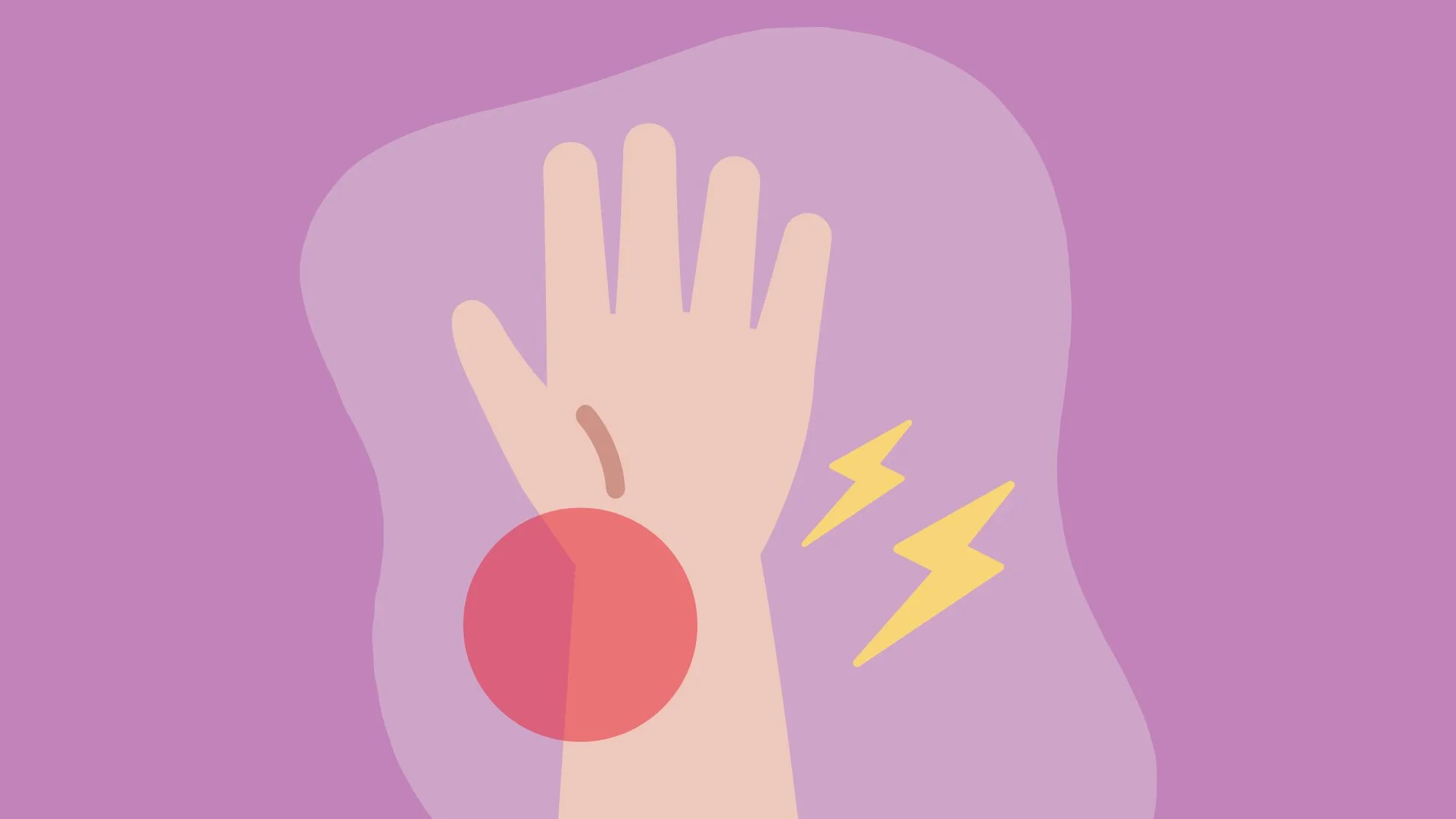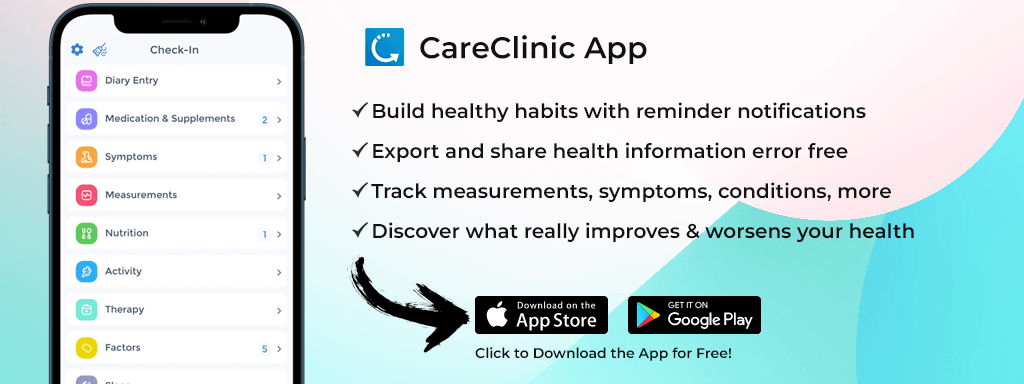
Welcome to this article on understanding the link between Broken Wrist Syndrome and Autism. In this comprehensive piece, we will delve into the definition of Broken Wrist Syndrome, and explore Autism Spectrum Disorder. Investigate the connection between the two conditions, highlight the implications for healthcare providers, discuss future research directions, and provide practical self-care tips for individuals at home. Let’s get started![1][2]
Broken Wrist Syndrome Overview
Broken Wrist Syndrome is a condition characterized by a series of physical and neurological symptoms that primarily affect the wrist and hand. Individuals with this syndrome may experience pain, swelling, limited range of motion, and difficulty performing everyday tasks. The exact cause of Broken Wrist Syndrome is still under investigation. However recent research points towards a potential link with Autism Spectrum Disorder.
Research into Broken Wrist Syndrome has revealed fascinating insights into the connection between the wrist and neurological conditions such as Autism Spectrum Disorder. While the exact mechanisms are not yet fully understood, scientists believe that there may be shared genetic factors or altered neural pathways that contribute to the development of both conditions.
Symptoms and Diagnosis of Broken Wrist Syndrome
Diagnosing Broken Wrist Syndrome can be challenging due to the overlapping nature of its symptoms with other conditions. Common symptoms include wrist pain, tenderness, stiffness, and weakness. However, it is important to note that these symptoms can vary in severity and presentation from person to person.
One interesting aspect of Broken Wrist Syndrome is the potential for atypical symptoms. While wrist pain and limited range of motion are commonly observed, some individuals may also experience sensory abnormalities. Such as heightened sensitivity to touch or temperature changes in the affected hand. These unique manifestations further highlight the complexity of this condition.
To confirm a diagnosis, healthcare providers may perform a physical examination, imaging tests such as X-rays or MRIs, and review the patient’s medical history. Additionally, advanced diagnostic techniques, such as nerve conduction studies or electromyography, may be employed to assess the nerve function and identify any underlying nerve damage.
Treatment Options for Broken Wrist Syndrome
When it comes to treating Broken Wrist Syndrome, a multi-disciplinary approach is often necessary to address the various aspects of the condition. Treatment options may include physical therapy to improve wrist mobility and strength, pain management techniques, and the use of assistive devices to support daily activities.
Physical therapy plays a crucial role in the rehabilitation process for individuals with Broken Wrist Syndrome. Therapists employ a variety of techniques, such as range of motion exercises, strengthening exercises, and manual therapy, to help patients regain optimal wrist function. Additionally, occupational therapists may guide adapting daily activities to minimize strain on the affected wrist.
In cases where conservative measures do not provide sufficient relief, surgical intervention may be considered. Surgical procedures for Broken Wrist Syndrome aim to repair any structural damage in the wrist or hand, such as fractures or ligament tears. Surgeons utilize advanced techniques, such as arthroscopy or open reduction and internal fixation, to restore stability and function to the affected wrist.
It is important to note that the treatment approach for Broken Wrist Syndrome is highly individualized. Taking into account factors such as the severity of symptoms, the presence of any underlying conditions, and the patient’s overall health. Therefore, individuals with this condition must consult with a qualified healthcare professional to receive personalized care.[3]
Exploring Autism Spectrum Disorder
Autism Spectrum Disorder (ASD) is a complex neurodevelopmental condition that affects individuals to varying degrees. The hallmark characteristics of ASD include difficulties in social interaction, communication challenges, and repetitive behaviors. Early recognition and intervention play a crucial role in supporting individuals with Autism Spectrum Disorder.
Autism Spectrum Disorder is a condition that affects people from all walks of life. It does not discriminate based on age, gender, or cultural background. It is estimated that approximately 1 in 54 children are diagnosed with ASD. Which made it one of the most prevalent developmental disorders.
Recognizing the signs of Autism Spectrum Disorder early on can significantly impact a child’s development and future outcomes. Some common signs include limited eye contact, delayed or absent speech, repetitive movements or behaviors, sensitivity to sensory stimuli, and difficulty with social interactions. However, it is important to note that every individual with ASD is unique. Symptoms can vary widely.
When it comes to diagnosing Autism Spectrum Disorder, a comprehensive evaluation is typically conducted by a team of professionals. Including psychologists, pediatricians, and speech-language pathologists. This evaluation may involve observing the child’s behavior, conducting interviews with parents and caregivers, and administering standardized assessments.
Therapies and Interventions for Autism
There are various evidence-based therapies and interventions available to support individuals with Autism Spectrum Disorder. Applied Behavior Analysis (ABA), occupational therapy, speech therapy, and social skills training are among the most commonly utilized approaches. These interventions focus on promoting communication skills, enhancing social interactions, and developing independence.
Applied Behavior Analysis (ABA) is a widely recognized and effective therapy for individuals with ASD. It involves breaking down complex skills into smaller, more manageable steps and using positive reinforcement to teach new behaviors. ABA therapy can be tailored to meet the specific needs of each individual and is often implemented in both home and school settings.
Occupational therapy aims to help individuals with ASD develop the skills necessary for daily living and independent functioning. This may include activities that improve fine motor skills, sensory integration techniques, and strategies to enhance self-regulation.
Speech therapy focuses on improving communication skills. Including speech production, language comprehension, and social communication. Speech-language pathologists work closely with individuals with ASD to develop personalized goals and implement strategies to enhance their ability to express themselves effectively.
Social skills training is another important intervention for individuals with Autism Spectrum Disorder. It involves teaching individuals how to navigate social situations, understand social cues, and develop meaningful relationships. This can be done through structured group activities, role-playing exercises, and individualized coaching.
It is important to note that while therapies and interventions can be highly beneficial, they are not a cure for Autism Spectrum Disorder. Each individual’s journey with ASD is unique, and the goal of these interventions is to support and empower individuals to reach their full potential.[4]
Investigating the Connection Between Broken Wrist Syndrome and Autism
Recent research has sparked interest in exploring the potential link between Broken Wrist Syndrome and Autism Spectrum Disorder. Both conditions seem to share some common genetic and neurological factors, suggesting a possible underlying association. Further studies are needed to elucidate the intricate relationship between these two conditions.
The Role of Genetics in Broken Wrist Syndrome and Autism
Genetic factors are known to play a significant role in both Broken Wrist Syndrome and Autism Spectrum Disorder. Specific genetic variations may predispose individuals to these conditions, although the exact mechanisms are not fully understood. Further research in this area aims to identify specific genetic markers that may contribute to a better understanding of the connection between Broken Wrist Syndrome and Autism.
Research has shown that certain genes involved in bone development and repair. Such as the COL1A1 and COL1A2 genes, may also be implicated in Autism Spectrum Disorder. These genes are responsible for producing collagen. A protein that provides structural support to bones and other connective tissues. It is hypothesized that alterations in the expression or function of these genes may disrupt normal bone development. It can contribute to the development of both Broken Wrist Syndrome and Autism.
Additionally, studies have identified a potential link between certain genes involved in neuronal development and the risk of developing both Broken Wrist Syndrome and Autism Spectrum Disorder. For example, the SHANK3 gene, which plays a crucial role in synaptic function and neuronal communication, has been associated with an increased risk of Autism Spectrum Disorder. Alterations in the expression or function of these genes may affect both bone development and neurological processes. Leading to the manifestation of both conditions.
Neurological Factors in Broken Wrist Syndrome and Autism
Neurological factors also play a crucial role in both Broken Wrist Syndrome and Autism Spectrum Disorder. Research suggests that abnormalities in brain development and connectivity are associated with both conditions. Understanding these shared neurological factors may provide insights into the underlying pathophysiology and potential treatment strategies.
Studies have shown that individuals with Autism Spectrum Disorder often exhibit atypical brain structure and connectivity patterns. These abnormalities can affect various regions of the brain. Including the prefrontal cortex, amygdala, and cerebellum, which are involved in social cognition, emotional processing, and motor coordination. Interestingly, similar structural and functional brain abnormalities have also been observed in individuals with Broken Wrist Syndrome.
One possible explanation for these shared neurological findings is the concept of “pleiotropy,” which refers to a single gene or genetic variant influencing multiple traits or conditions. Certain genes or genetic variations that contribute to abnormal brain development and connectivity may also impact bone development. Leading to an increased risk of both Broken Wrist Syndrome and Autism Spectrum Disorder.
The Role of Wnt Signaling Pathway
Furthermore, studies have suggested that disruptions in neuronal signaling pathways. Such as the Wnt signaling pathway, may contribute to the development of both Broken Wrist Syndrome and Autism Spectrum Disorder. The Wnt signaling pathway plays a crucial role in various biological processes. Including bone development, synaptic plasticity, and neurodevelopment. Dysregulation of this pathway could potentially lead to abnormalities in bone formation and neuronal connectivity, contributing to the manifestation of both conditions.
Overall, the investigation into the connection between Broken Wrist Syndrome and Autism Spectrum Disorder is a complex and multifaceted area of research. The role of genetics and neurological factors in both conditions suggests a potential shared etiology. Further studies are needed to unravel the intricate relationship between Broken Wrist Syndrome and Autism. Shedding light on the underlying mechanisms and potentially paving the way for novel therapeutic interventions.[5][6][7][8]
Implications for Healthcare Providers
Healthcare providers play a vital role in screening, diagnosing, and managing individuals with Broken Wrist Syndrome and co-existing Autism Spectrum Disorder. However, there are specific challenges encountered when addressing these conditions simultaneously.
When it comes to screening and diagnosing Broken Wrist Syndrome in individuals with Autism Spectrum Disorder, healthcare providers face unique challenges. Communication difficulties and sensory sensitivities can complicate the process. For example, individuals with Autism Spectrum Disorder may struggle to express their pain or discomfort accurately, making it harder for healthcare providers to identify a potential broken wrist. Additionally, sensory sensitivities can make it challenging for healthcare providers to perform physical examinations or imaging tests. As the individual may experience heightened discomfort or anxiety.
To overcome these challenges, healthcare providers need to adopt a patient-centered approach. This means taking into account the unique needs and challenges of each individual. It is crucial to create a safe and comfortable environment for the patient. Minimizing sensory triggers and providing alternative communication methods if necessary. By utilizing comprehensive assessments and involving a multidisciplinary team, healthcare providers can improve the accuracy of their diagnosis. This team may include specialists in both orthopedics and autism, allowing for a holistic evaluation that considers both conditions.
Once a diagnosis is confirmed, healthcare providers face the task of developing individualized treatment plans for individuals with Broken Wrist Syndrome and Autism Spectrum Disorder. This requires a comprehensive understanding of both conditions and their impact on the individual’s daily life. Collaboration between healthcare providers, patients, and their families is essential in this process.[9]
The Role of Healthcare Providers During Treatment Phase
During the treatment planning phase, healthcare providers should closely collaborate with patients and their families. To develop tailored interventions that address the specific challenges and goals of the individual. For example, if the individual with Autism Spectrum Disorder has difficulty following instructions or participating in traditional physical therapy, alternative approaches may be necessary. These could include incorporating visual aids, breaking down tasks into smaller steps, or utilizing sensory integration techniques to enhance engagement and participation.
Furthermore, healthcare providers should consider the potential impact of Autism Spectrum Disorder on the individual’s recovery from a broken wrist. Individuals with Autism Spectrum Disorder may require additional support and accommodations during the healing process. This may include providing visual schedules or social stories to help them understand and cope with the changes in their daily routine. As well as offering sensory-friendly options for pain management.
Healthcare providers face unique challenges when screening, diagnosing, and managing individuals with Broken Wrist Syndrome and co-existing Autism Spectrum Disorder. By adopting a patient-centered approach, utilizing comprehensive assessments, and collaborating closely with patients and their families, healthcare providers can develop individualized treatment plans that address the specific challenges and goals of each individual. This approach ensures that individuals with Broken Wrist Syndrome and Autism Spectrum Disorder receive the best possible care and support throughout their journey to recovery.[10][11]
Future Research Directions
As we continue to deepen our understanding of the link between Broken Wrist Syndrome and Autism Spectrum Disorder, future research endeavors aim to explore potential therapeutic approaches and highlight the importance of early detection and intervention.
Potential Therapeutic Approaches
Future therapeutic approaches for individuals with Broken Wrist Syndrome and Autism Spectrum Disorder may involve a combination of physical rehabilitation, behavior interventions, and novel targeted treatments. Collaborative efforts from healthcare professionals, researchers, and technology developers can pave the way for innovative interventions.
The Importance of Early Detection and Intervention
Early detection and intervention are critical in promoting positive outcomes for individuals with Broken Wrist Syndrome and Autism Spectrum Disorder. Educating healthcare providers, caregivers, and the general public about the early signs and symptoms can lead to timely referrals and access to appropriate interventions. Technology such as the CareClinic App can assist in tracking symptoms, interventions, and progress over time.
Understanding the link between Broken Wrist Syndrome and Autism Spectrum Disorder requires further research and exploration. By recognizing the symptoms, seeking appropriate medical care, and engaging in targeted interventions, individuals can improve their overall well-being and quality of life. Remember to consult with a qualified healthcare professional for personalized advice and guidance. Together, we can continue to unravel the intricate connections between different conditions and pave the way for novel treatment strategies.[12][13][14]
Use the CareClinic App to Navigate Your Health Journey
If you or a loved one are navigating the complexities of Broken Wrist Syndrome and Autism Spectrum Disorder, the CareClinic App can be an invaluable tool for managing your health journey. By allowing you to track symptoms, medication, and therapy progress, the app provides a comprehensive overview of your condition and treatment effectiveness.
Its features include customizable reminders for medication and appointments, ensuring that you stay on top of your health regimen. The CareClinic App is designed to empower you with data to make informed decisions alongside your healthcare provider.
Understanding the nuances of your health can lead to improved outcomes. CareClinic App facilitates this by offering detailed reports and analytics based on your entries. These insights can help identify patterns and triggers, aiding in the adjustment of treatment plans for better results.
By using the CareClinic App, you take an active role in your health management, which is especially crucial when dealing with the interplay of Broken Wrist Syndrome and Autism Spectrum Disorder. To take control of your health journey today, Install the App and experience the benefits of structured health tracking.
References Managing your health can feel overwhelming when you have limited energy each day. Learning what is spoon theory helps you understand how to pace yourself and save energy for what matters most. This approach works really well alongside tracking your symptoms and treatments.
- “Hypermobility among children with autism spectrum disorders and its correlation with anthropometric characteristics – PubMed”. https://pubmed.ncbi.nlm.nih.gov/34125746/
- “Autism, Joint Hypermobility-Related Disorders and Pain – PMC”. https://pmc.ncbi.nlm.nih.gov/articles/PMC6292952/
- “Symptomatic generalised joint hypermobility and autism spectrum disorder are associated in adults – PMC”. https://www.ncbi.nlm.nih.gov/pmc/articles/PMC9567022/
- “Data and Statistics on Autism Spectrum Disorder | Autism Spectrum Disorder (ASD) | CDC”. https://www.cdc.gov/autism/data-research/index.html
- “Mutations in the gene encoding the synaptic scaffolding protein SHANK3 are associated with autism spectrum disorders – PMC”. https://pmc.ncbi.nlm.nih.gov/articles/PMC2082049/
- “Whole-Exome Sequencing Identifies Three Candidate Homozygous Variants in a Consanguineous Iranian Family with Autism Spectrum Disorder and Skeletal Problems – PMC”. https://pmc.ncbi.nlm.nih.gov/articles/PMC7325133/
- “SHANK3 as an autism spectrum disorder-associated gene – PubMed”. https://pubmed.ncbi.nlm.nih.gov/22749736/
- “Disrupted extracellular matrix and cell cycle genes in autism-associated Shank3 deficiency are targeted by lithium – PMC”. https://pmc.ncbi.nlm.nih.gov/articles/PMC11153165/
- “View of A Practical Guide for Improving Orthopaedic Care in Children with Autism Spectrum Disorder | Journal of the Pediatric Orthopaedic Society of North America”. https://www.jposna.org/index.php/jposna/article/view/640/685
- “Creative Interventions for PT Clients on the Autism Spectrum – Elite Learning”. https://www.elitelearning.com/resource-center/rehabilitation-therapy/physical-therapy/creative-interventions-for-pt-clients-on-the-autism-spectrum/
- “Sensory Integration in Autism Spectrum Disorders – Arms Wide Open ABA Therapy”. https://www.armswideopenaba.com/blog/sensory-integration-in-autism
- “The Overlooked Link Between Autism and Hypermobility Explained”. https://www.clarkshealthcare.com/the-overlooked-link-between-autism-and-hypermobility/
- “Sensing Technologies for Autism Spectrum Disorder Screening and Intervention – PMC”. https://pmc.ncbi.nlm.nih.gov/articles/PMC5298619/
- “Hypermobility and Autism | Autism Therapy Services”. https://www.hiddengemsaba.com/articles/hypermobility-and-autism


